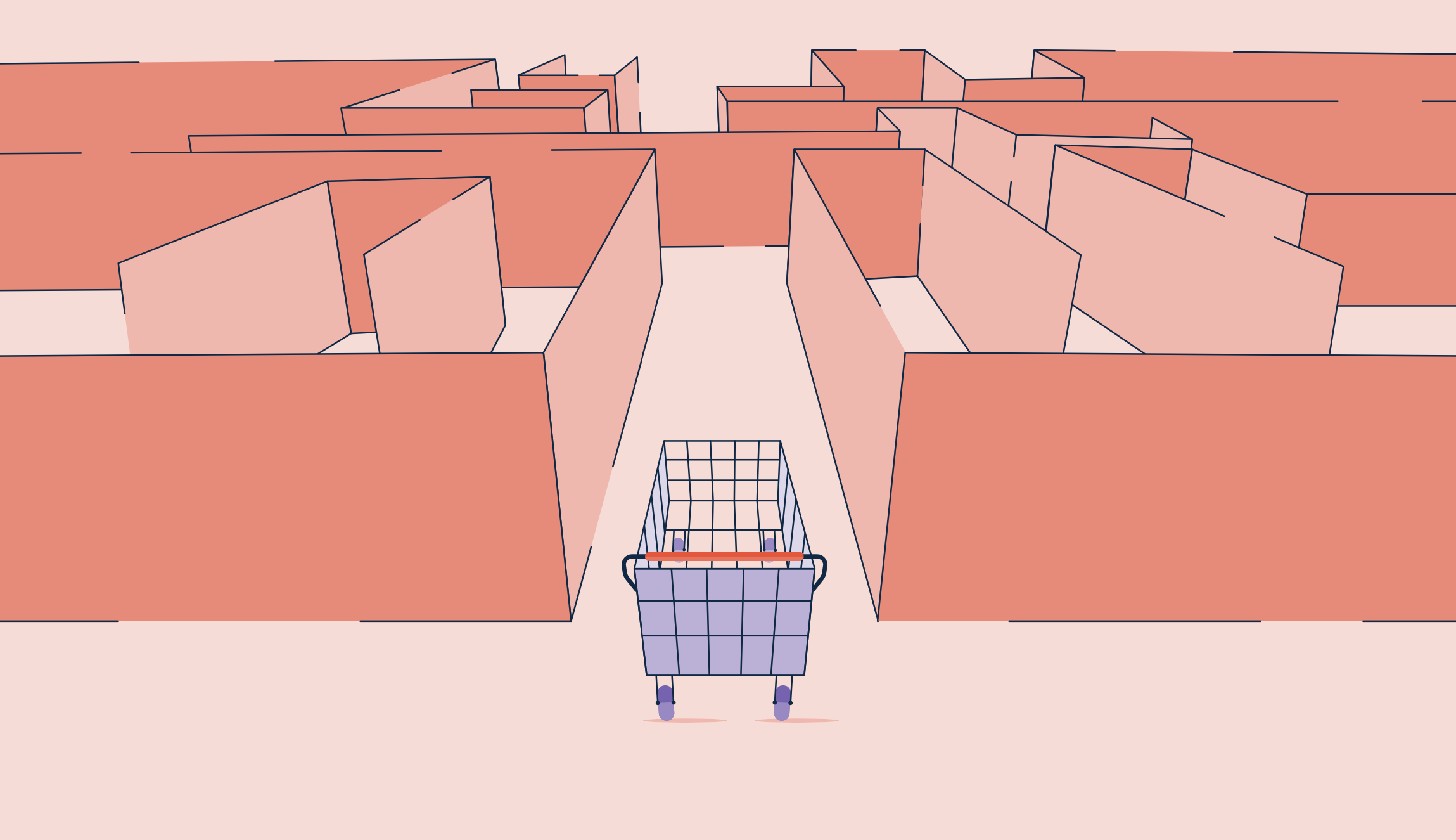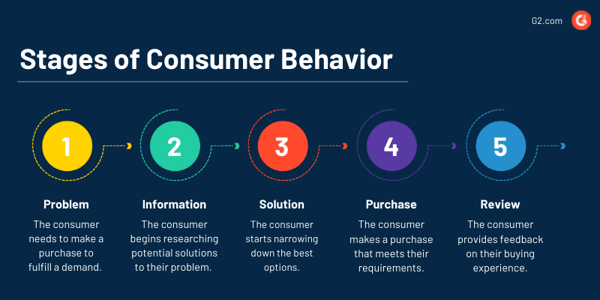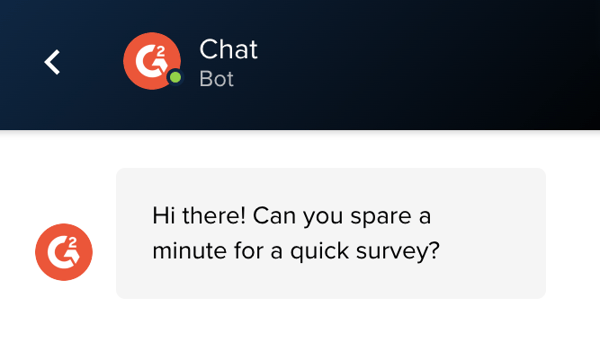July 26, 2022
 by Alexandra Vazquez / July 26, 2022
by Alexandra Vazquez / July 26, 2022

Do you ever look at someone and wonder: what is going on inside their head?
If you’re nosey like me, you want to know why people do what they do. And if you’re a manufacturer, you definitely need to know how your customers found out about your product and why they purchased it.
Analyzing consumer behavior data is your ticket to the show that is consumer behavior.
Consumer behavior is the study of how and why people make purchases and what influences their decision-making along the way.
Some companies use retail analytics software to collect the data necessary for studying consumer behavior. These tools help companies gather and organize retail data, build intelligent dashboards to display real-time analytics, monitor business KPIs, and automate data reports.
This software is often integrated with retail management systems to create a complete data repository for all business operations.
Consumer behavior leads to a deeper understanding of target markets. The more you know about your customers, the easier it’ll be for your company to make changes that use your time and money in the best ways.
There are four types of consumer behavior that a company can study. Individuals may exhibit one or more of these behaviors, and companies must collect data to determine which are most prevalent in their specific consumer base.
Complex consumer buying behavior takes place when a consumer is making a unique purchase. This may be either the process of purchasing an expensive item or something the buyer isn’t very familiar with. In this instance, the consumer spends a lot of time researching before purchasing to make the right decision.
The consumer research phase of this buying behavior may include learning more about the market or consulting friends, family, and experts. The consumer takes this opportunity to develop ideas about what they want from the product so they have the right info to begin forming an opinion. This opinion eventually becomes a preference for certain products that they think will fulfill their expectations. Whatever checks all or most of their boxes gets purchased in the end.
Dissonance-reducing consumer buying behavior is when a consumer is ready to spend a lot of time making a purchasing consumer decision. This decision may be challenging for them because they’re having a hard time seeing the benefits and differences between several brands. This is especially common when making a large purchase.
For example, a consumer who doesn't know much about cars may take a long time to decide which car to purchase. They may have some criteria like four-door, eco-friendly, or comfy seating, but with so many cars that feature what they want, this decision can get incredibly stressful. The main concern for a consumer going through this buying behavior is the fear of making a choice and regretting it later.
Habitual consumer buying behavior follows the consumer through exactly what it sounds like: a well-known purchase. In this instance, the buyer is very familiar with the product at hand and most likely already uses it regularly.
This behavior is common for impulse buys because the customer already understands the market. They rely heavily on brand familiarity when making these purchases, but brand loyalty isn’t significant to them because they know many brands that can satisfy their needs.
Variety-seeking consumer behavior occurs when a consumer is looking to switch things up. They have most likely been using the same product for a while and want to try something new.
The choice to go in a different direction doesn’t necessarily mean they were unhappy with the experience they had with the previous product. This buying behavior is usually associated with products that are relatively universal across the industry, like ice cream or hairspray.
Various factors affect how and why someone chooses to make a purchase. Whether conscious or not, all of these factors affect each individual and make up their unique wants and needs in the buying process.
Cultural factors help people create and shift opinions and preferences. Cultural views are created by the values and ideologies of your customers’ communities. These cultural factors include subcultures like religion, ethnicity, nationality, or geographical societies.
Social class plays a considerable role in these cultural factors because if a particular community collectively cannot afford your product or has no use for it in their circumstances, you’re wasting their time. If there aren’t any communities that can see a benefit in your product, it may be worth going back to the drawing board.
Personal factors have to do with the potential customer and what makes up their individuality. This includes their age, gender, occupation, education level, income, and general lifestyle.
Age and gender can help companies narrow down exactly who they think their target audience is. For example, if you’re selling insurance, consumer behavior research may show that the people you should be selling to are middle-aged to the elderly. If you’re selling a video game, an analysis probably shows higher interest amongst male teens and young adults.
Collecting income data is essential when developing a product. If you’re trying to sell a good or service that’s too expensive for your target market, you’re making a big mistake. On the other hand, you can determine if upping your prices is mutually beneficial. Analyzing income analytics of your consumers will show just how much they are willing to spend based on the amount of spending money they have available.
Occupation and lifestyle are also important personal factors that affect consumer behavior data. For example, if you’re selling dry erase markers, marketing to teachers would be especially important. If you’re selling exercise equipment, you’d want to focus on people who aspire to work out.
So maybe you’ve determined that your target market can afford your product. Now, what makes them actually want the product?
The psychological factors that affect behavior are associated with what influences consumers and how they attempt to make purchase decisions. These factors include beliefs, motivations, and perceptions.
Beliefs play a huge role in whether or not your product is received well. If a certain individual is very passionate about animal rights and your product is made with real fur, your brand does not match up with that person’s beliefs, and they will most likely not become a customer.
Motivation plays less to what someone wants and more to what they need. A company that sells security cameras relies heavily on the public’s motivation to keep themselves and loved ones safe.
Perception occurs when a consumer creates a specific opinion about your product. This opinion is usually built upon their perception of your branding and marketing efforts, customer reviews, and general reputation.
Social factors are made up of the people in the consumer’s life who can influence them and their decision-making. The major groups that affect these social psychology decisions are the consumer’s family and friends. When a trusted friend recommends a product, the consumer gains an extra layer of security, knowing that the product was successful for someone they know.
of survey respondents said that they trust recommendations from people they know more than any other source.
Source: Nielsen
Situational factors have to do with the environment where the buying decision takes place. They’re temporary factors, but still heavily influence consumer behavior. For brick and mortar shops, this includes the lighting, layout, music, location, and general vibe of a store.
Have you ever gotten so overwhelmed inside a store that you did everything you could to get in and get out quickly? The situational factors in that shop didn't match up with your personal consumer preferences.
For an e-commerce shop, situational factors include the ease of use of the online store, the colors, page layout, or load time. If a visitor feels unsure about whether or not they want to purchase from you and every webpage takes too long to load for their liking, you’re probably losing a customer.
Companies should keep an eye on several different patterns as they start collecting and analyzing consumer behavior data. Noticing these patterns can help companies investigate what they could be doing differently to make more sales.
Understanding these five main stages a consumer follows as they move through the buying process can help companies target potential consumers at every step of the way.

Collecting and analyzing consumer behavior takes a lot of effort, but it’s always beneficial to have more information than not enough.
of consumers are more likely to buy a product from a brand that offers a personalized experience.
Source: Yieldify
There are a couple of challenges that a company may face as they begin collecting and analyzing consumer behavior data. It’s important to keep these in mind to manage expectations and prepare backup plans.
Collecting consumer behavior data is all about getting out there and connecting with your target market. There are many methods for doing just that.

It’s time to figure out what your customers are doing.
Consumer behavior gives you the key to a universe of information. Whether you’re trying to improve marketing efforts, figure out why people are buying, or determine where your competitors are holding the upper hand, consumer behavior data is here to answer all of your questions.
Once you understand why your consumers act the way they do, consider analyzing customer experience metrics to improve their interactions with you!
Alexandra Vazquez is a former Senior Content Marketing Specialist at G2. She received her Business Administration degree from Florida International University and is a published playwright. Alexandra's expertise lies in copywriting for the G2 Tea newsletter, interviewing experts in the Industry Insights blog and video series, and leading our internal thought leadership blog series, G2 Voices. In her spare time, she enjoys collecting board games, playing karaoke, and watching trashy reality TV.
Brands and marketers try to base entire strategies around this one age-old question: what do...
 by Sneh Choudhary
by Sneh Choudhary
Communication creates communities.
 by Yashwathy Marudhachalam
by Yashwathy Marudhachalam
There are plenty of customer feedback management solutions out there, but most of them are...
 by Alyona Medelyan
by Alyona Medelyan
Brands and marketers try to base entire strategies around this one age-old question: what do...
 by Sneh Choudhary
by Sneh Choudhary
Communication creates communities.
 by Yashwathy Marudhachalam
by Yashwathy Marudhachalam


